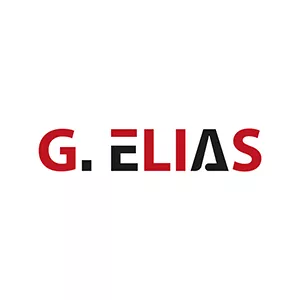- within Intellectual Property topic(s)
- with Finance and Tax Executives and Inhouse Counsel
- with readers working within the Law Firm industries
Introduction
In Nigeria's commercial and creative environment, the clear distinction between image rights and copyright has become significantly necessary. As images and photographs are increasingly becoming critical assets in the media, entertainment, advertising, and branding space, the big questions around who owns an image and who controls its use have become more recurring. Notably, the Copyright Act 2022 (the “Act”), has classified photographs as artistic works which become eligible for copyright protection once they meet the requirements of originality and fixation in a tangible medium. Also, the Act vests initial ownership of copyright in the author, who is stated to be the photographer, unless otherwise provided by agreement or created under certain employment or commissioned circumstances. This means that while the photographer generally owns the copyright, the subject of the image may retain certain control over its use through privacy, contract, or personality rights, which are not expressly codified in the Act but may be enforced under the common law. In such often complex circumstances, it is essential to understand the legal framework governing both the control and ownership of images, as well as to distinguish between these rights and the protections they afford. The following discussion explores the legal foundations of each right, highlights their areas of overlap, and offers guidance on navigating the distinctions between them.
Legal Foundations: Who Owns What?
Under the Act, the copyright in photographs vests automatically in the photographer from the moment the work is fixed in a tangible medium of expression.1 This right arises without any formality2 and grants the copyright owner exclusive rights such as reproduction, publication, communication to the public, and adaptation of the work. The duration of protection for photographs is 50 years from the end of the year in which the work was first made available to the public with the author's consent, or, if unpublished, 50 years from creation.3
By contrast, image right represents the rights against misappropriation of their image including their name, likeness, physical appearances, nicknames, pictures, personal slogans, etc. Put simply, it is the right of a person to control the public's commercial exploitation of a person's identity.4 While image rights currently lacks a standalone statutory recognition in Nigeria, it is exercised by right owners under the constitutional right to privacy and some case laws which have provided interpretations in that regard5 .
Consequently, while the photographer retains the exclusive copyright in the photograph, this does not automatically transfer control over the subject's likeness to such photographer. 6 Nigerian courts, including in Ubom v. Globacom (Nig.) Ltd.7 , have affirmed that the subject of a photograph may rely instead on other legal protections such as privacy, passing off, or contractual terms, but cannot claim ownership of the photograph's copyright merely by virtue of being depicted in it.
This distinction between who owns an image and who controls its commercial use has been tested by the Supreme Court again in the recent case of Ubom v. Globacom. In this case, the plaintiff, Rasine Brown Ubom, was a former finalist in Globacom's Glo Naija Sings talent show discovered that her photograph was used, without her consent, on billboards and promotional materials for subsequent editions of the show. She filed a suit in the Rivers State High Court seeking damages and an injunction against further unauthorised use of her image.
The lower courts dismissed the suit on jurisdictional grounds, holding that the matter fell under copyright law and thus fell under the exclusive jurisdiction of the Federal High Court. However, the Supreme Court reversed that position, holding that since Ubom made no claim to copyright ownership, her case was properly grounded in tort and contract law. As such, the State High Court was the appropriate forum. The Court reaffirmed that copyright in a photograph belongs to the photographer, not the subject of the image. However, it also acknowledged that the unauthorised commercial use of a person's likeness may give rise to actionable claims under tort, contract, or even constitutional privacy rights under section 37 of the Constitution of the Federal Republic of Nigeria (1999) as amended. This decision marks a significant step in recognising the control individuals can exert over the use of their image, even in the absence of codified image rights. It highlights the growing tension between copyright ownership and personal identity, reinforcing the need for express consent in commercial image use.
Ubom's decision clearly shows a judicial move to protect persons against unauthorised commercial exploitation of their images while not claiming copyright which the Act had vested on the photographer. The copyright holder remains the legal owner of an image with all exclusive rights conferred by the Act, including right to reproduce, publish, and distribute. 8 However, the person depicted can sometimes exercise limited control through tort law, provided that misrepresentation or reputational harm can be established. Until Nigeria enacts specific legislation to address image rights, courts will likely continue to navigate this issue and provide legal succor to the image subject whose photograph has been used without consent.
Copyright and its overlap with Image Rights
We note that the purpose of the Copyright Act's remains to protect the rights of authors to ensure just rewards and recognition for their intellectual efforts, providing appropriate limitations and exceptions to guarantee access to creative works.
In the spirit of the above objective, the Act classifies photographs as artistic works9 and grants the authors automatic copyright protection once they satisfy the requirements of originality and fixation in a tangible medium of expression from which it can be perceived, reproduced, or otherwise communicated, either directly or with the aid of any machine or device10.
The Act has further bestowed on the photographer, the authorship and first ownership of the said copyright, except where the work is created in the course of employment, under a commission, or pursuant to contractual arrangements transferring ownership11. This scope of protection for the photographer as the owner of the copyright extends to exclusive economic rights such as the rights to reproduce, publish, include the work in an audiovisual work, broadcast, communicate it to the public, make it available online at a time and place chosen by users, adapt the work, and carry out equivalent acts in relation to any adaptation12 .
Beyond economic rights, the Act also confers on photographers certain moral rights such as the right to claim authorship, as well as the right to object to and seek remedies for any distortion, mutilation, or other derogatory treatment of their work prejudicial to their honor or reputation. These rights are inalienable during the author's lifetime and only pass by testamentary disposition or operation of law upon death. They subsist for the same duration as the economic rights in the work13 .
That said, the subject of a photograph generally has no automatic copyright claim to the image, unless they are also the photographer. However, contrary to common misconception, this does not mean that the photographer, as the copyright owner, may freely use the subject's likeness, particularly for commercial purposes, without consent. Such use can still give rise to issues under privacy, data protection, and publicity rights, even where the copyright is held by the photographer. The image rights owner retains the right under the law to seek remedies against the photographer for such an infringement.
Navigating the Divide: Best Practices
To mitigate the risk of confusion and establish a clear legal footing, players across the copyright and image right ecosystem should adopt tailored best practices. To start with, for photographers and creators, it is paramount to secure model releases and written permissions from subjects ahead of any commercial deployment of their photographs or images. Copyright should be registered where applicable, and licensing terms explicitly defined to delineate permitted use.14
Secondly, image rights owners such as public figures and private individuals should actively monitor the use of their likeness across media channels. Where unauthorised exploitation occurs, the individual may first issue a cease-and-desist letter to the infringer, followed by legal action in the relevant court if necessary. Such action should focus on enforcing the individual's constitutional right to control the use of their image, as well as their commercial right to seek damages for any gains made through such infringement. Furthermore, when engaging in commercial agreements with brands or agencies, image rights owners should endeavour to secure the relevant contractual protections that guarantee control and remuneration for the use of their image.
Additionally, brands and platforms must be diligent in this regard to avoid deploying individuals' images without clear legal rights and consider both copyright licenses from content owners and image rights or consent from depicted individuals.15 Compliance with Nigerian laws and evolving global standards on image rights should inform brands' campaign strategy and advertisements.
Conclusion
The tension between control and ownership of images is particularly acute in Nigeria's emerging legal schema. The Ubom's decision illustrates that while copyright remains firmly tethered to the creator of an image, subjects may nonetheless pursue remedies grounded in personality rights through contract or tort, through the court system. The Nigerian Copyright Act 2022 secures the photographer's exclusive rights, yet the right of an individual to protect against the unauthorised use of their image means that those rights are not absolute. Regardless of the uncertainty in current state on image right laws in Nigeria, individuals are encouraged to challenge the unauthorised commercial or reputational use of their likeness through the various routes available.
Ultimately, as image creation and distribution proliferate within social, commercial, and technological contexts, Nigeria's law must evolve, whether by legislative reform or judicial innovation, to recognize and protect the unique intersection between image rights and creative expression.
Footnotes
1 Sections 2(1)(c), 10, and 28(1) of the Act; <Copyrights, Intellectual Property, and Unlawful Use of Content and Photography Online: A Comparative Analysis of Nigeria and the UK – Jurimetrics Law Firm>.
2 Section 4 of the Act.
3 Sections 19(1)(c) of the Act.
4 Banire v NTA-Star TV Network Limited (2021) LPELR-52824(CA)
5 Incorporated Trustees of Digital Rights Lawyers Initiative & Ors v National Identity Management Commission (2021) LPELR55623; Ubom v Globacom Nigeria Limited (2025)
6 NWLR (Pt. 1985) 157; Banire v NTA-Star TV Network Limited (2021) LPELR-52824(CA) 6 Banire v NTA-Star TV Network Limited (supra)
7 (2025) 6 NWLR (Pt. 1985) 157.
8 Sections 9 – 13 of the Act.
9 Section 2(1)(c) and 108 of the Act.
10 Section 2 (2)(a)(b) of the Act.
11 Section 26 (1) of the Act.
12 Section 10 of the Act.
13 Section 14 of the Act.
15 LegalClarity Team Accessed July 29 2025.
The content of this article is intended to provide a general guide to the subject matter. Specialist advice should be sought about your specific circumstances.



